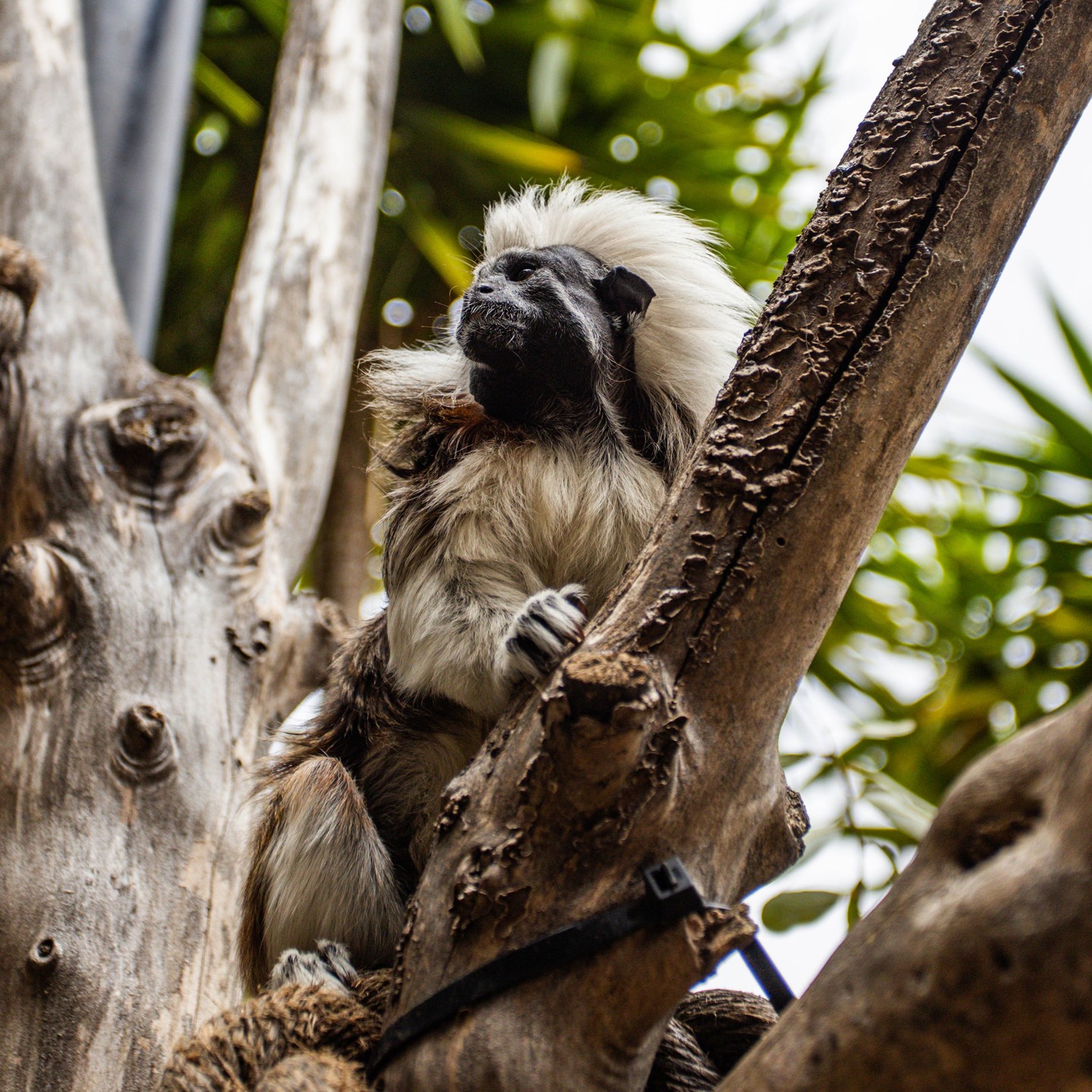- The anatomical and functional adaptations of cotton-top tamarins without opposable thumbs.
- The role of sharp-clawed fingers and toes in aiding mobility and survival in arboreal habitats.
- The ecological significance and conservation status of cotton-top tamarins.
- Understanding behavior and social structure within tamarin groups.
- Conservation strategies and efforts for the protection of cotton-top tamarins in their natural habitat.
Cotton-top tamarins, scientifically known as Saguinus oedipus, are small primates native to the tropical forests of northwestern Colombia. One key adaptation that sets them apart from many other primates is their lack of opposable thumbs. This fascinating trait provides an excellent example of how life can flourish in myriad ways, even against what might seem limitations. Instead of opposable thumbs, cotton-top tamarins rely heavily on their sharp-clawed fingers and toes, which play crucial roles in their daily existence among the trees.
In the absence of opposable thumbs, tamarins have developed other specialized anatomical qualities. Their hands and feet are equipped with claw-like nails that allow them to maintain a stable grip on tree branches. These claws serve as an evolutionary adaptation that enables efficient climbing and maneuvering through dense foliage. The strong grip facilitated by their claws compensates for the lack of a thumb when negotiating their complex arboreal environment. Their limbs have a wide range of movement, further aiding in reaching and grasping food, or quickly escaping predators. This impressive blend of adaptations emphasizes the efficiency of evolutionary solutions in addressing specific environmental challenges.
The cotton-top tamarin’s ability to navigate its habitat without opposable thumbs sheds light on its impressive survival strategies. Living primarily in the mid-levels of forest canopies, tamarins use their sharp claws to cling and spring from tree to tree, which aids in escaping ground-dwelling predators. This arboreal lifestyle not only offers safety but opens access to various food sources like fruits, insects, and small reptiles. The tamarins’ diet helps maintain the ecological balance as they play roles in pest control and seed dispersion. Their sharp claws are adept at opening tough skins of fruit and prying insects from their hiding places, an essential strategy for a species with such stringent feeding requirements.
Ecologically, cotton-top tamarins are vital to their habitats. As omnivores with a diverse diet, they use their non-opposable thumbs and other adaptations to impact their ecosystems positively. By dispersing seeds through their feces, they contribute to forest regeneration. Additionally, by consuming insects, they help control insect populations, thereby influencing the wider ecological web. These behaviors underline their important role in maintaining the health and stability of the forest ecosystems.
Behaviorally, cotton-top tamarins are social creatures, typically living in groups of two to nine members. These groups are often made up of related individuals, led by a dominant pair that monopolizes breeding privileges. In these social structures, communal rearing of offspring is common, with group members helping to care for young. This cooperative behavior not only strengthens social bonds within the group but also enhances survival rates by sharing the responsibilities of protection and nurturing. The lack of opposable thumbs has not hindered their ability to form intricate social structures, showcasing their adaptability and resilience.
Conservation efforts for cotton-top tamarins are urgently needed. Habitat destruction due to deforestation has significantly decreased their numbers. As a critically endangered species, these tamarins face threats from illegal pet trade and habitat fragmentation. Conservationists focus on habitat protection, reforestation, and public education to safeguard their future. Programs aiming to work with local communities to create sustainable practices highlight the importance of ecological stewardship.
Numerous organizations are involved in tamarin conservation, promoting tourism that reinforces the economic value of preserving these creatures. Protecting their natural habitats not only ensures the survival of cotton-top tamarins but also supports biodiversity. Conservation strategies include establishing protected reserves and conducting research to monitor population status and health. Universities and zoos often collaborate to raise awareness and contribute to a broad understanding of the tamarin’s ecological significance.
The story of the cotton-top tamarin is not just about survival without opposable thumbs; it’s a tale of how species adapt and thrive. By understanding their unique adaptations and ecological roles, we gather insights into the intricacies of biodiversity. Conservation efforts must continue to preserve not just these remarkable primates, but the intricate ecosystems they are a part of. The future of cotton-top tamarins depends on our commitment to conservation and the sustainable management of our natural resources. Through these efforts, we can ensure that future generations will also have the opportunity to marvel at their brilliance and adaptability.
*****
Source Description
No opposable thumbs, no problem! 👍🐒
Cotton-top tamarins don’t have opposable thumbs and rely on sharp-clawed fingers and toes to run, jump, and climb about the trees that make up their arboreal homes.
Alt-text: A cotton-top tamarin climbs a branch above our camera. It glances around while it grasps onto the bark under its fingers.


